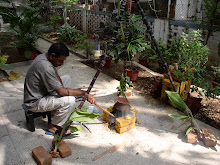The ability to provide the correct amount of protection is one of the important elements in the development of protective clothing worn by individuals who apply pesticides as part of their jobs. While overprotection in hot climatic conditions can result in heat stress and low compliance, some of the existing design-based requirements can result in too little protection, as material performance plays a critical role in protective clothing.
In an attempt to find the right balance of protection, ASTM International Committee F23 on Personal Protective Clothing and Equipment has developed a new standard. ASTM F2669, Performance Specification for Protective Clothing Worn by Operators Applying Pesticides, is under the jurisdiction of Subcommittee F23.30 on Chemicals.
According to Anugrah Shaw, Ph.D., professor, University of Maryland Eastern Shore, and chair of the task group that developed the standard, ASTM F2669 (www.astm.org/Standards/F2669.htm) takes the level of potential risk into account in making recommendations for protective clothing.
“ASTM F2669 has three levels of protection that allow for the selection of garments based on potential risk determined as part of the pesticide registration process,” says Shaw. “For example, a Level 1 cotton or polyester/cotton coverall, similar to those used routinely for operator exposure studies, is sufficient when the potential risk for the formulation is relatively low. Garments that meet more stringent requirements can be used for scenarios where higher protection is required.”
Shaw notes that the key point of the standard is that it provides a basis for the development of certified garments. ”Personal Protective Equipment (PPE) instructions on pesticide labels around the world are very inconsistent, and often very general statements are used. Part of the problem has been lack of international performance specification standards for the certification of garments. Certified garments would provide the opportunity for the crop protection industry to specify the garment level on a pesticide label. This is already being done for gloves and respirators,” says Shaw.
The crop protection industry and government agencies responsible for worker/operator protection and registration of pesticide products will be the potential users of ASTM F2669.
ASTM International standards can be purchased from Customer Service (phone: 610-832-9585; service@astm.org) or at www.astm.org. ASTM International welcomes and encourages participation in the development of its standards. For more information, visit www.astm.org/JOIN.
ASTM Committee F23 Next Meeting: Jan. 26-28, 2010, January committee week, San Antonio, Texas
Technical Contact: Anugrah Shaw, University of Maryland Eastern Shore, Princess Anne, Md., Phone: 410-651-6064; ashaw@umes.edu
ASTM Staff Contact: Stephen Mawn, ASTM International, Phone: 610-832-9726; smawn@astm.org
ASTM PR Contact: Barbara Schindler, ASTM International, Phone: 610-832-9603; bschindl@astm.org

No comments:
Post a Comment